Sciatica Pain : Physiotherapy Treatment
Introduction of Sciatica :
Sciatica means radiating pain in the area of the sciatic nerve, which Nerve roots join from lower back area through your hips and buttocks and down Back side of each leg. Typically, sciatica affects only one side of your body or sometimes of both lower limb may be affected.
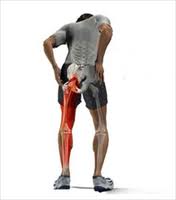
Sciatica most commonly occurs when a herniated disk, bone spur on the spine or narrowing of the spine (spinal canal stenosis) compresses part of the nerve. This causes inflammation, pain and often some numbness in the affected leg.
Although the Low back pain associated with sciatica can be severe, most cases resolve with non-operative treatments in a few weeks. People who have severe sciatica that’s associated with significant leg weakness or bowel or bladder changes might be candidates for surgical treatment also required.
Anatomy of Sciatic Nerve :
To Understand sciatica, we must have enough knowledge of anatomy and physiology of sciatica nerve.
What are common causes of sciatica?
While sciatica is most commonly a result of a lumbar disc herniation directly pressing on the nerve, any cause of irritation or inflammation of the sciatic nerve can produce the symptoms of sciatica. This irritation of nerves as a result of an abnormal intervertebral disc is referred to as radiculopathy.
Other causes of sciatica include irritation of the nerve from adjacent bone, tumors, muscle, internal bleeding, infections in or around the lumbar spine, spondylolisthesis, injury, spinal canal stenosis, cauda equina syndrome, osteophyte, and other causes. Sometimes sciatica can occur because of irritation of the sciatic nerve during pregnancy.
Sciatica is a common symptom of several different medical conditions; however, an estimated 90 percent of cases are due to a herniated (slipped) disk. The spinal column is made up of three parts:
vertebra (individual bones in the spine that protect underlying nerves)
nerves
disks
Disks are made of cartilage, which is a strong and resilient material; the cartilage acts as a cushion between each vertebra and allows the spine to be flexible. A herniated disk occurs when a disk is pushed out of place, putting pressure on the sciatic nerve.
Other causes of sciatica include :
Lumbar spinal canal stenosis – narrowing of the spinal cord in the lower back.
Lumbar Spondylolisthesis – a condition where a disk slips forward over the vertebra below it.
Tumors within the spine – these may compress the root of the sciatic nerve.
Infection – ultimately affecting the spine.
Other causes – for instance, injury within the spine.
Cauda equina syndrome – a rare but serious condition that affects the nerves in the lower part of the spinal cord; it requires immediate medical attention.
In many cases of sciatica, there is no single obvious cause.
Which are the signs/symptoms of sciatica?
Pain that radiates from your lower (lumbar) spine to your buttock and down the back of your leg is the hallmark of sciatica. You might feel the discomfort almost anywhere along the nerve pathway, but it’s especially likely to follow a path from your low back to your buttock and the back of your thigh and calf.
The pain can vary widely, from a mild ache to a sharp, burning sensation or excruciating pain. Sometimes it can feel like a jolt or electric shock. It can be worse when you cough or sneeze, and prolonged sitting can aggravate symptoms. Usually, only one side of your body is affected.
Some people also have numbness, tingling, or muscle weakness in the affected leg or foot. You might have pain in one part of your leg and numbness in another part.
Which are the Risk factors for Sciatica?
Risk factors for sciatica include:
Age. Age-related changes in the spine, such as herniated disks and bone spurs, are the most common causes of sciatica.
Obesity. By increasing the stress on your spine, excess body weight can contribute to the spinal changes that trigger sciatica.
Occupation. A job that requires you to twist your back, carry heavy loads or drive a motor vehicle for long periods might play a role in sciatica, but there’s no conclusive evidence of this link.
Prolonged sitting. People who sit for prolonged periods or have a sedentary lifestyle are more likely to develop sciatica than active people are.
Diabetes. This condition, which affects the way your body uses blood sugar, increases your risk of nerve damage.
Complications in Sciatica :
Although most people recover fully from sciatica, often without treatment, sciatica can potentially cause permanent nerve damage. Seek immediate medical attention if you have:
- Loss of feeling in the affected leg
- Weakness in the affected leg
- Loss of bowel or bladder function.
Prevention of Sciatica :
It’s not always possible to prevent sciatica, and the condition may recur. The following can play a key role in protecting your back:
Exercise regularly. To keep your back strong, pay special attention to your core muscles — the muscles in your abdomen and lower back that are essential for proper posture and alignment. Ask your doctor to recommend specific activities.
Maintain proper posture when you sit. Choose a seat with good lower back support, armrests and a swivel base. Consider placing a pillow or rolled towel in the small of your back to maintain its normal curve. Keep your knees and hips level.
Use good body mechanics. If you stand for long periods, rest one foot on a stool or small box from time to time. When you lift something heavy, let your lower extremities do the work. Move straight up and down. Keep your back straight and bend only at the knees. Hold the load close to your body. Avoid lifting and twisting simultaneously. Find a lifting partner if the object is heavy or awkward.
How to Diagnosis sciatica?
Diagnosis
During the physical exam, your doctor may check your muscle strength and reflexes. For example, you may be asked to walk on your toes or heels, rise from a squatting position and, while lying on your back, lift your legs one at a time. Pain that results from sciatica will usually worsen during these activities.
Imaging tests
Many people have herniated disks or bone spurs that will show up on X-rays and other imaging tests but have no symptoms. So doctors don’t typically order these tests unless your pain is severe, or it doesn’t improve within a few weeks.
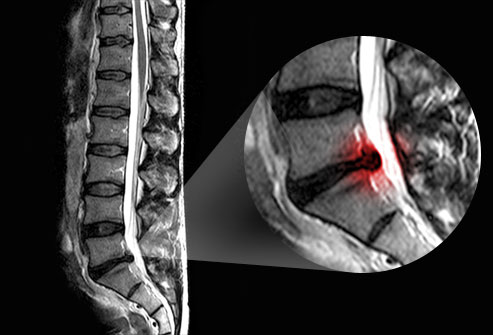
X-ray. An X-ray of your spine may reveal an overgrowth of bone (bone spur) that may be pressing on a nerve.
MRI. This procedure uses a powerful magnet and radio waves to produce cross-sectional images of your back. An MRI produces detailed images of bone and soft tissues such as herniated disks. During the test, you lie on a table that moves into the MRI machine.
CT scan. When a CT is used to image the spine, you may have a contrast dye injected into your spinal canal before the X-rays are taken — a procedure called a CT myelogram. The dye then circulates around your spinal cord and spinal nerves, which appear white on the scan.
Electromyography (EMG). This test measures the electrical impulses produced by the nerves and the responses of your muscles. This test can confirm nerve compression caused by herniated disks or narrowing of your spinal canal (spinal stenosis).
Treatment in Sciatica :
If your pain doesn’t improve with self-care measures, your doctor might suggest some of the following treatments.
Medical Treatment :
The types of drugs that might be prescribed for sciatica pain include:
- Anti-inflammatories
- Muscle relaxants
- Narcotics
- Tricyclic antidepressants
Physiotherapy Treatment :
Once your acute pain improves, your physiotherapist can design a rehabilitation program to help you prevent future injuries. This typically includes exercises to correct your posture, strengthen the muscles supporting your back and improve your flexibility.
For many patients, centralizing low back pain is accomplished by getting into a backward bending position, called extension exercises or press-ups:
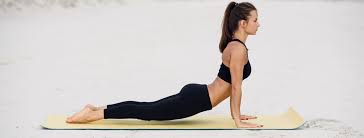
Image of a person doing press-up exercise for sciatica pain relief
The low back is gently placed into extension by lying on the stomach (prone position) and propping the upper body up on the elbows, keeping hips on the floor. This should be started slowly and carefully, since this position may be painful at first.
Hold the press-up position initially for 5 seconds, and gradually work up to 30 seconds per repetition. Aim to complete 10 repetitions.
After practicing this exercise, the spine specialist or physiotherapist may recommend a more advanced extension:
Image of person doing the advanced press-up exercise for sciatic pain relief
From the prone position, press up on the hands while the pelvis remains in contact with the floor. Keep the lower back and buttocks relaxed for a gentle stretch.
This position is typically held for 1 second, repeated 10 times.
If lying flat causes too much pain, a similar exercise can be done standing:
Place both hands on the hips for support and lean back as far as is comfortable while still feeling the lower back stretch backward. Be sure not to stretch so far that falling is a risk.
Hold this position for 5 seconds, gradually working up to holding for 30. Repeat 10 times.
The prone position is usually preferred above a standing position, but it may be advised to begin standing and then move to lie down.
These extension exercises are done regularly, about every 2 hours. More importantly, the spine specialist may recommend avoiding bending forward. This position tends to counteract the effects of the extension exercises. The specialist may ask the patient to correct any forward flexed positions immediately by doing an extension exercise.
Advanced Sciatica Exercises for Abdominal Muscles and Back Muscles
As the pain works out of the leg and centralizes in the low back, the exercises typically are advanced to strengthen the low back and abdominal muscles to prevent recurrences of sciatic pain caused by the herniated disc.
Low back muscle strengthening exercises:
Upper back extension. In the prone position with hands clasped behind the lower back, raise the head and chest slightly while looking at the floor (stay low). Begin by holding the position for 5 seconds, and gradually work up to 20 seconds. Aim to complete 8 to 10 repetitions.
Prone arm and leg lifts. In the prone position with the head and chest lowered to the floor, lightly raise an arm and opposite leg slowly, with the knee locked, 2 to 3 inches from the floor. Begin by holding a position for 5 seconds, and complete 8 to 10 repetitions. As strength builds, aim to hold a position for 20 seconds.
Electrotherapies :
Electrotherapy is part of Physiotherapy, various Electric Modalities That Are used by physiotherapists to Treat the patient according to their condition. These all aim to produce various physiological effects with the goal of improving symptoms or recovery.
Transcutaneous electrical nerve stimulation (TENS) involves the use of pads placed on the skin, and a battery-operated device delivering a small current to them to produce a tingling sensation. Mechanisms for TENS-induced pain relief are thought to be multifactorial due to the effect of controlling the activity of the peripheral, spinal, and supra-spinal nervous systems.
Interferential therapy involves the application of medium-frequency electrical currents to affected tissues. Treatment is usually achieved by placing several electrodes on the skin over the affected area, sometimes with the use of suction cups. It is used to stimulate local nerves with the aim of modulating pain, reducing swelling, stimulating local muscles, or promoting healing.531 It is usually administered by a physiotherapist during several treatment sessions, but portable devices are now available for home use.
Low-level laser therapy (LLLT) involves the non-invasive application of a single wavelength of light to the skin over the injured area using a probe. One or a series of treatments may be administered in an outpatient setting. There are various laser devices and probe configurations in clinical use. The light is absorbed in the tissues and it is hypothesized that this results in local heating and affects on local chemical activity and cellular behavior. It is through those effects that laser therapy is purported to have an anti-inflammatory effect and promote tissue repair.556
Therapeutic ultrasound involves the delivery of mechanical energy in the form of high-frequency sound waves to the site of injury, usually through a probe applied to the skin. This penetrates the tissues at varying depths, depending on the frequency used. Delivered continuously it has a heating effect on the tissues. It is proposed that this thermal or mechanical stimulation may generate improved blood flow and may also facilitate the inflammatory process and tissue healing.531
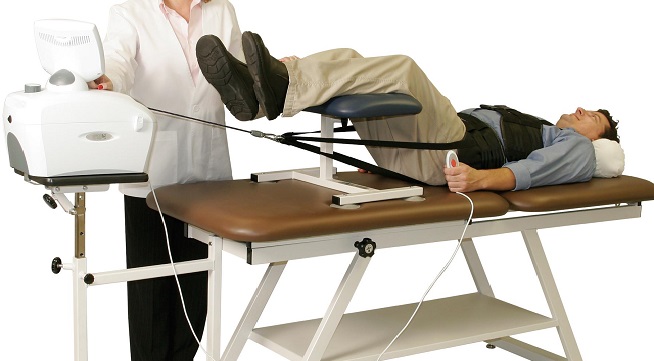
A lumbar traction is a form of decompression therapy that relieves pressure on the spine. It can be performed manually or mechanically.
Lumbar traction is used to treat herniated discs, sciatica, degenerative disc disease, pinched nerves, and many other back conditions.
Manual spinal traction
In manual spinal traction, a physiotherapist uses their hands to put people in a state of traction. Then they use manual force on the joints and muscles to widen the spaces between vertebrae.
Spinal traction is a non-surgical way to relieve pain and correct problems in the spine. While it does have some potential side effects, spinal traction offers consistent relief for most people.
Steroid injections :
In some cases, your doctor might recommend an injection of a corticosteroid medication into the area around the involved nerve root. Corticosteroids help reduce pain by suppressing inflammation around the irritated nerve. The effects usually wear off in a few months. The number of steroid injections you can receive is limited because the risk of serious side effects increases when the injections occur too frequently.
Surgery
This option is usually reserved for when the compressed nerve causes significant weakness, loss of bowel or bladder control, or when you have pain that progressively worsens or doesn’t improve with other therapies. Surgeons can remove the bone spur or the portion of the herniated disk that’s pressing on the pinched nerve.
Lifestyle and home remedies
For most people, sciatica responds to self-care measures. Although resting for a day or so may provide some relief, prolonged inactivity will make your signs and symptoms worse.
Other self-care treatments that might help include:
Cold packs. Initially, you might get relief from a cold pack placed on the painful area for up to 20 minutes several times a day. Use an ice pack or a package of frozen peas wrapped in a clean towel.
Hot packs. After two to three days, apply heat to the areas that hurt. Use hot packs, a heat lamp or a heating pad on the lowest setting. If you continue to have pain, try alternating warm and cold packs.
Stretching. Stretching exercises for your low back can help you feel better and might help relieve nerve root compression. Avoid jerking, bouncing or twisting during the stretch, and try to hold the stretch for at least 30 seconds.
Over-the-counter medications. Pain relievers such as ibuprofen (Advil, Motrin IB, others) and naproxen sodium (Aleve) are sometimes helpful for sciatica.
Alternative medicine
Alternative therapies commonly used for low back pain include:
Acupuncture. In acupuncture, the practitioner inserts hair-thin needles into your skin at specific points on your body. Some studies have suggested that acupuncture can help back pain, while others have found no benefit. If you decide to try acupuncture, choose a licensed practitioner to ensure that he or she has had extensive training.
Chiropractic. Spinal adjustment (manipulation) is one form of therapy chiropractors use to treat restricted spinal mobility. The goal is to restore spinal movement and, as a result, improve function and decrease pain. Spinal manipulation appears to be as effective and safe as standard treatments for low back pain, but might not be appropriate for radiating pain.

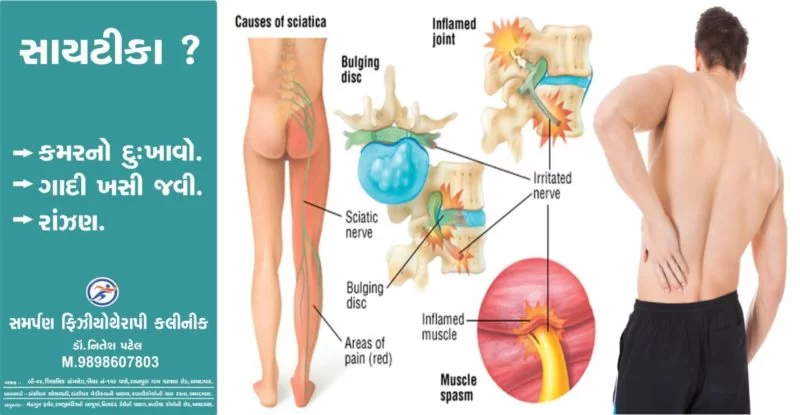
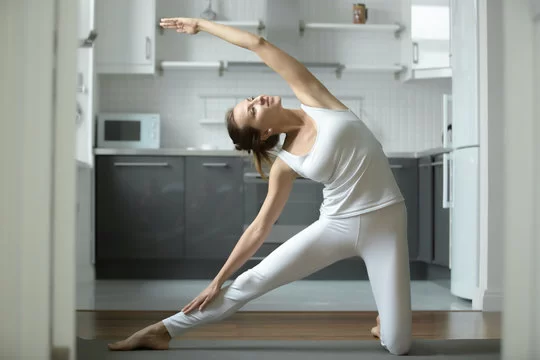
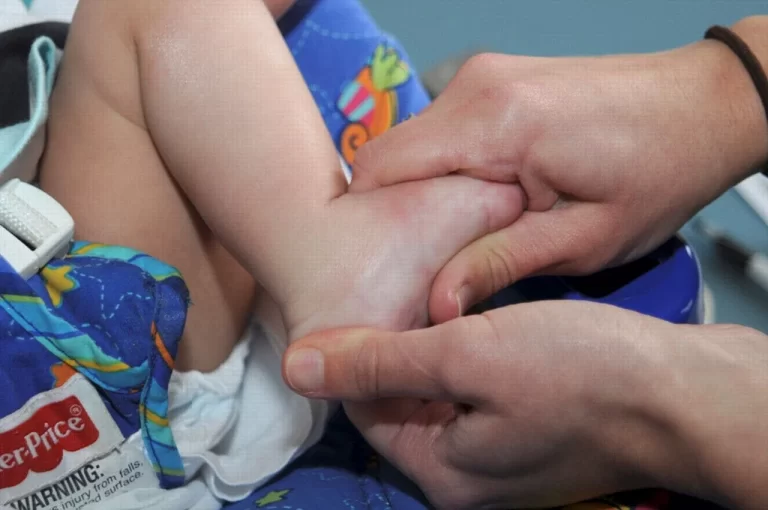
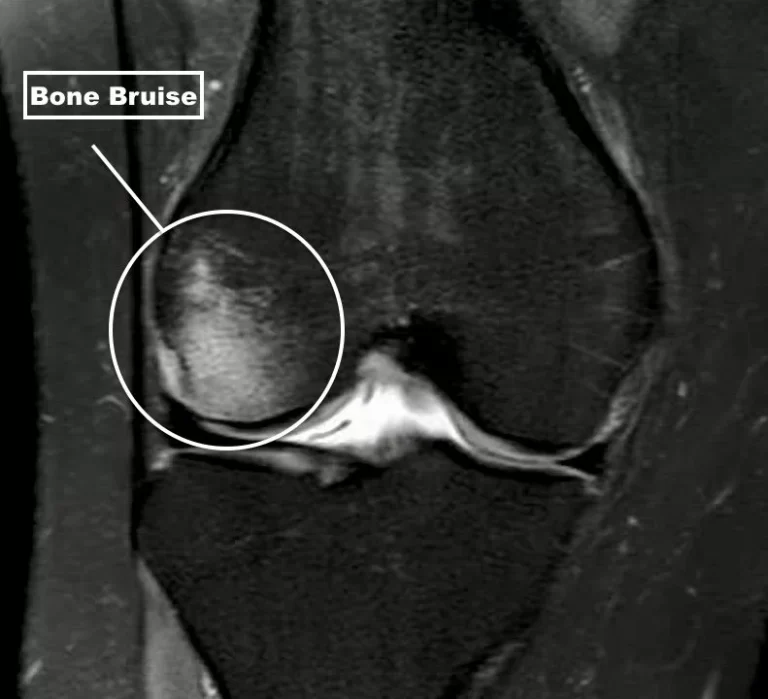
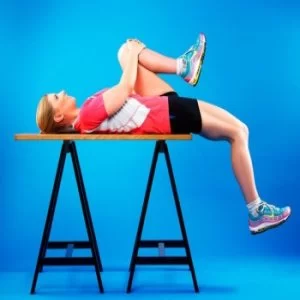


If you have sciatica pain, Diagnosis of Sciatica is highly important for proper treatment plan, Physiotherapist will start treatment according to Diagnosis and symptoms of Sciatica pain, Exercise and treatment is vary from person to person, In this article you will find general treatment and exercise details!